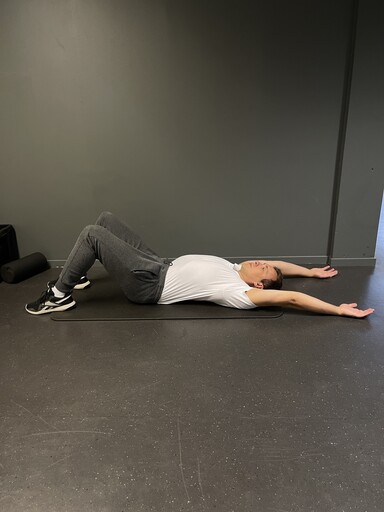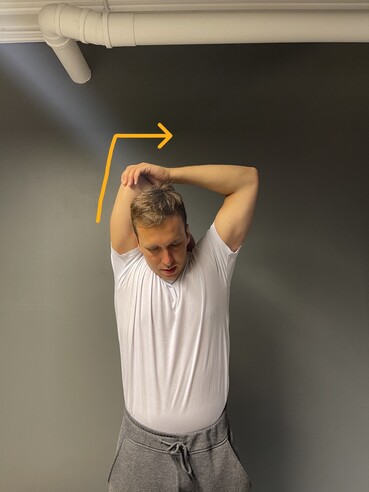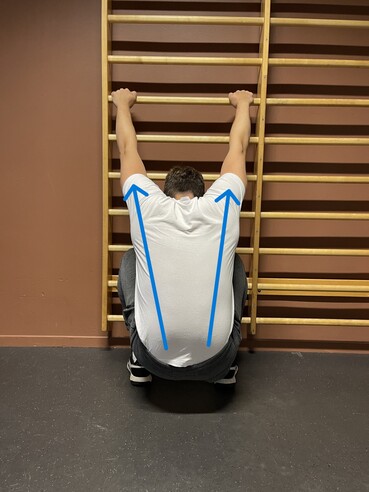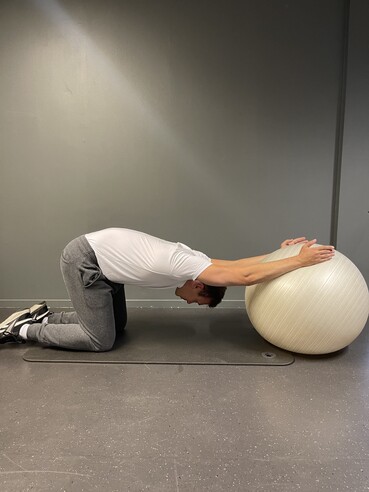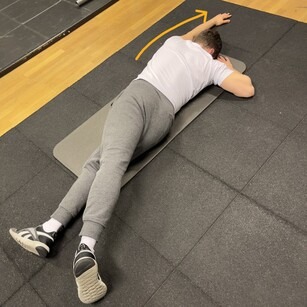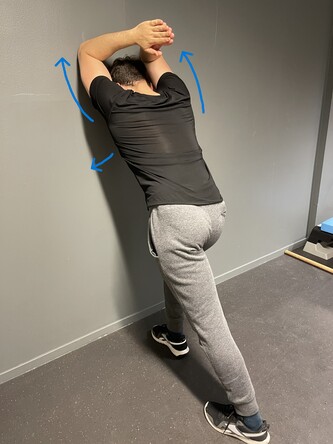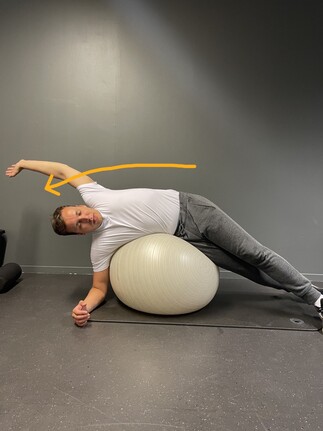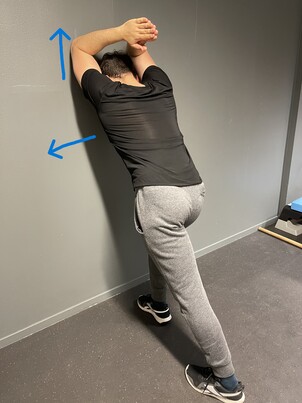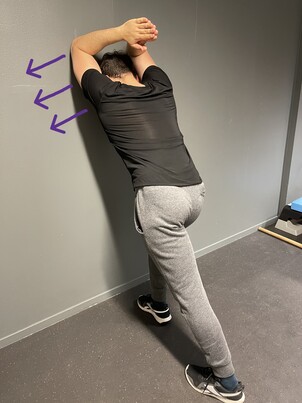Best Lat Stretches for Back and Shoulder Flexibility
In this article, I’ll show you the best lat stretches and explain everything you need to know about latissimus to have a flexible and healthy back. You will learn:
- How to know if you have tight lats
- What’s causing your tight lats
- How to loosen your tight lats with 7 best stretches for latissimus dorsi muscle
- Advanced PNF stretching technique for lats
- How to stretch a pulled latissimus dorsi
- Stretching lats for scoliosis
- Benefits of stretching lats
- Safety measures when stretching lats
Let’s dive in.
Latissimus Dorsi Tightness Test
The most effective way for you to test tightness in your lats is by lying on your back (supine position). Then, lift your arms above your head as much as you can. This movement is known as shoulder flexion.
If your lumbar spine extends (lifts up from the ground), then you probably have a tight latissimus dorsi muscle. See the picture below.
How does this test work? Lats are the only muscles from lumbar spine area that are attached to your arm bone and they extend your arms. When you place your arms in the shoulder flexion, you’re testing lats flexibility among other muscles like subscapularis and teres major. To isolate the function of lats you just need to see how lumbar spine reacts to latissimus dorsi lengthening.
7 Best Latissimus Dorsi Stretches for Back Flexibility and Back Posture
Standing Lat Stretch
- From a standing position, grab your elbow and pull the elbow to the opposite side.
- Hold this stretch for 30s.
- This is the basic lat stretch that stretch also triceps muscle of your arm.
Rib Wall Lat Stretch
- Hold a rib wall your both hands and gently lower your body until you reach the squat position.
- Hold this position for 30s.
Rib Wall Lat Stretch One Side
- From standing, place one hand on the rib wall (above your head) and other at your hip height.
- Side bend your upper body towards your arm that’s above your head.
- Hold this stretch for 30s.
This stretch is great for fixing a scoliosis, but it’s not my first choice. See more below.
Yoga Ball Lat Stretch
- While kneeling on your knees, place your hands on a yoga ball.
- Then push downward with your chest.
- You can perform this stretch both dynamically (ten times) or as a static hold for 30s.
Prone Lat Stretch
- Lying on your stomach, extend one arm above your head.
- Cross your feet.
- Push forward with your arm and slightly to the opposite side.
- Hold this stretch for 30s.
Wall Lat Stretch
- Place your elbows on a wall (above your head).
- Push forward with your chest.
- Hold this stretch 30s.
Yoga Side Lat Stretch
- Lay on your side on a yoga ball.
- Extend your arm above your head.
- Press downward with your pelvis.
- Hold this stretch for 30s.
Why Are My Lats Tight?
You prefer chest-dominant exercises over back-dominant exercises at the gym. Neglecting back muscles, including the lats, results often in tightness in both chest and back muscles. Since lats are helping with internally rotating the shoulder, avoiding external rotation of shoulders (exercises for the upper back) will make the lats tight over time.
Rounded shoulder posture and sitting a lot. Having strong and healthy back muscles demands both strength and mobility training. If you’re sitting a lot, you’re probably contributing to rounded shoulders posture and tight lats at the same time.
PNF Stretching Technique for Latissimus Dorsi
- I will show you the contract-relax PNF stretching technique from a standing position.
Start from a standing position with your elbows on a wall. Then perform a static stretch by pushing your chest forward and your elbows up. See the picture below.
Hold this position for 30s. Then do the following:
- Push against the wall with your elbows gently.
- Hold the lat contraction for 6s.
- Relax and dive into a deeper stretch from the picture above.
Repeat the whole process five times, each time going into a deeper stretch.
How To Stretch a Pulled Lats
You should avoid stretching pulled lats in the first two to four weeks to avoid any further damage to your lats.
Even light stretching can be dangerous in this situation. After a few weeks, you can start by gently stretching your lats from a standing position. As you advance into a deeper stretch, you should add a rib wall stretch and a side-lying lat stretch.
Stretching Lats for Scoliosis
Look at your shoulder height when analyzing a scoliosis posture. Find a shoulder that’s lowered and focus on stretching the lats on that side. If you stretch the opposite side, you could increase the scoliosis posture even more.
Start by stretching your lats from a side-lying position. This position is the best because you’ll avoid pressure on your spine and you can focus on breathing and expanding your upper body (side that’s shorted).
The next best stretching position for lats and scoliosis is from one leg kneeling position. That’s because you can implement pelvic tilts when stretching lats. Add backward pelvic tilt (posterior) to stretch your lats even more.
In addition to lats, you should stretch also quadratus lumborum, erector spinae, gluteus and hamstrings to achieve the best possible function in your whole body.
Benefits of Stretching Your Lats
- Reduce the muscle pain in the back of your shoulders
- Improve overhead mobility when performing a shoulder press or similar exercise
- Improve your posture (rounded shoulders or scoliosis)
- More functional back muscles that work together when rowing or performing a pull-ups
Safety Measures and Tips When Stretching Lats
- Slowly increase the intensity of the stretch
- Don’t bounce into a stretch
- Make sure you don’t stretch lats through shoulder pain
- Hold the static stretch for 30s max
- Perform dynamic stretches for lats before your back workout and static stretches after your back workout
- Stretch the lats on both sides to avoid asymmetry

